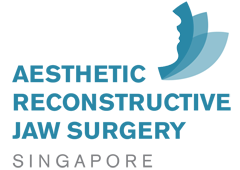Share this
How long does dental implant treatment take?
on September 8, 2016
 This is probably the third most commonly asked question about dental implants by patients, after “how painful is it?” followed by “how much it cost?” The first question is easy to answer. Dental implant surgery is generally not painful beyond the local anesthetic injection. However, the issue of cost and time is a bit more difficult. Simple treatment can be done in two visits; one visit to place the implant and another visit to fit the prosthesis. However, complex treatment can take a year or more to complete. What makes up the difference in time?
This is probably the third most commonly asked question about dental implants by patients, after “how painful is it?” followed by “how much it cost?” The first question is easy to answer. Dental implant surgery is generally not painful beyond the local anesthetic injection. However, the issue of cost and time is a bit more difficult. Simple treatment can be done in two visits; one visit to place the implant and another visit to fit the prosthesis. However, complex treatment can take a year or more to complete. What makes up the difference in time?
First let’s look at the treatment sequence of a simple case. This is a foreign patient from another country who flew in for the treatment. She had lost two molars on the lower made enquiries through email and phone prior to coming to Singapore. On the day of arrival, she came to the clinic directly from the airport. We do the usual physical examination and CT scan and proceed to place two implants on the same day through a flapless procedure. After the implants were placed, an impression of was made and sent to the laboratory. This first visit, which included the consultation, implants insertion and impression, took about two hours. The patient flew back home in the evening. Six weeks later, she came back and the screw-retained prosthesis was fitted. The second visit lasted about half an hour.
In contrast, another patient took two years to complete her treatment. She presented with infection of her upper right incisors. To complicate matters, she also had gum recession of those two incisors. The two incisors on the left side was functional at that time but the long term prognosis was guarded. CT scans showed excessive bone loss around the teeth. The treatment plan was to remove the four front teeth and replace with dental implants. Getting from the starting to the end point, however, requires multiple procedures. First, an impression of the teeth was made for fabrication of a temporary denture. The patient came back a week later to have the extractions and the temporary denture was fitted. A month later, bone grafting was done using bone harvested from her hip bone. This was done to increase the width of the bone so that it can support the implants later. However, the vertical height of the bone is also deficient and being in the aesthetic zone, vertical augmentation was also needed. Six months later, distraction osteogenesis was done to increase the vertical height of bone. Four months later, the implants were inserted. Three months later, the implants were uncovered and the prosthodontist proceeded to fabricate a provisional prosthesis on the implants. Various adjustments were made to the provisional to achieve the ideal aesthetics over the next few months. The final prosthesis was made about six months after the provisional was first placed. In all, the whole treatment duration lasted about two years
Is it possible to shorten the duration of treatment of the second case? It depends on the treatment goals. If aesthetics is not a concern, the implants could be placed at the same time as the bone graft in one stage. The provisional prosthesis could be omitted and the final prosthesis made right after the implants integrate. This could probably cut the treatment duration to about seven months.
The converse is true for the first case. To get a better result, instead of making the final prosthesis straightaway, doing a provisional first may give a better result. A provisional prosthesis gives the patient and dentist the opportunity to try out different shape and designs. It also allows shaping of the gums through which the prosthesis emerges. However, in an area of the mouth which is not visible to anyone other than the patient himself and the dentist, the benefit of such an approach is arguable.
In this age of instant gratification, a lot of research is being done on how to accelerate the process. From a waiting time of 4-6 months for implant to integrate with the bone before a crown is placed, we are now loading the implants immediately upon placement. This is possible because of better understanding of bone healing as well as advances in implant design. However, not all cases can be accelerated. Good clinical judgment is important in recognizing the cases that can and cannot be accelerated.
Earlier today, a patient whom I have just placed an implant last week brought her niece who had broken a front tooth many years ago and was restored with a root canal treatment and crown. Now, the tooth has become loose and is no longer salvageable. She was expecting to have the tooth extracted and an implant placed at the same time, just like what her aunt underwent last week. However, the aunt had extraction of her cracked second premolar with no other problem. The niece, on the other hand, has severe bone resorption around the affected tooth and will need bone grafting, Furthermore, this being a front tooth, preparations for an immediate temporary prosthesis must be made. When I explained this to them, they were rather surprised as they both thought that they could just get it done there and then.
As dental implant treatment gains popularity and widespread acceptance, it is also becoming commoditized. Cookie-cutter treatment plans are used increasingly without consideration of the specific needs of each case. It works for some patients but in others, it creates more problems than it solves. The implant is a means to an end, which is a prosthetic replacement for a missing tooth. It has to serve both functional and aesthetic purposes. To achieve the best results possible, a bespoke approach is essential.

Share this
- Jaw Surgery (93)
- Dental Implants Singapore (90)
- Orthognathic Surgery (48)
- Replacing Missing Teeth (26)
- Missing Teeth Options (23)
- Underbite (23)
- Bone Grafting (21)
- Costs (18)
- Facial Aesthetics (18)
- Aesthetics (17)
- dental implants (16)
- corrective jaw surgery (15)
- BOTOX (11)
- Dermal Fillers (11)
- Wisdom teeth (10)
- Fixed Implant Dentures (8)
- Loose Dentures Singapore (6)
- Medisave (6)
- sleep apnea (6)
- Braces (5)
- Dental Pain (5)
- Dentures in Singapore (5)
- Loose Teeth (5)
- Tooth Extraction (5)
- jaw deformities (5)
- bimax (4)
- bone graft (4)
- maxillomandibular advancement (4)
- all-on-4 (3)
- bimaxillary protrusion (3)
- chin implant (3)
- facial asymmetry (3)
- full mouth dental implants (3)
- genioplasty (3)
- immediate implant (3)
- removal of an integrated dental implant (3)
- third molars (3)
- wisdom tooth surgery (3)
- My Dentures Don't Fit (2)
- VME (2)
- bone graft healing (2)
- distraction osteogenesis (2)
- medical tourism (2)
- obstructive sleep apnea (2)
- orthodontics (2)
- plastic surgery (2)
- CT guided dental implants (1)
- Double jaw surgery (1)
- Invisalign (1)
- Periodontal Disease (1)
- Permanent Dentures Singapore (1)
- before and after photos (1)
- facial trauma (1)
- fractured dental implant (1)
- oral appliance therapy (1)
- root canal treatment (1)
- veneers (1)
- vertical maxillary excess (1)
- September 2019 (2)
- July 2019 (2)
- May 2019 (2)
- August 2018 (1)
- October 2017 (1)
- September 2017 (2)
- August 2017 (1)
- June 2017 (2)
- May 2017 (4)
- April 2017 (1)
- March 2017 (1)
- February 2017 (3)
- January 2017 (3)
- December 2016 (1)
- November 2016 (2)
- October 2016 (4)
- September 2016 (9)
- August 2016 (5)
- July 2016 (11)
- June 2016 (14)
- May 2016 (6)
- April 2016 (2)
- March 2016 (1)
- January 2016 (7)
- December 2015 (10)
- November 2015 (4)
- October 2015 (9)
- September 2015 (7)
- August 2015 (1)
- July 2015 (6)
- June 2015 (3)
- May 2015 (7)
- April 2015 (5)
- March 2015 (8)
- January 2015 (5)
- December 2014 (7)
- November 2014 (7)
- October 2014 (6)
- September 2014 (8)
- August 2014 (5)
- July 2014 (7)
- June 2014 (8)
- May 2014 (9)
- April 2014 (10)
- March 2014 (6)
- February 2014 (8)
- January 2014 (3)
Subscribe by email
Email subscription



No Comments Yet
Let us know what you think